Our meadows host a huge variety of wildflowers, which in turn support hundreds of species of invertebrates, birds, mammals and fungi.
Meadows exist in many different forms, from hay meadows and water meadows to magnificent lowland meadows. They can be found all across the UK, from the Highlands of Scotland to the rolling chalklands of southern England.
There’s nothing more blissful than walking through these meadows in spring and summer, when they're at their most beautiful. Our guide explores some of the best meadow walks in the UK.

Best meadow walks in Britain
Kingcombe Meadows, Dorset
2 miles/3.3km | 1.5 hours | easy
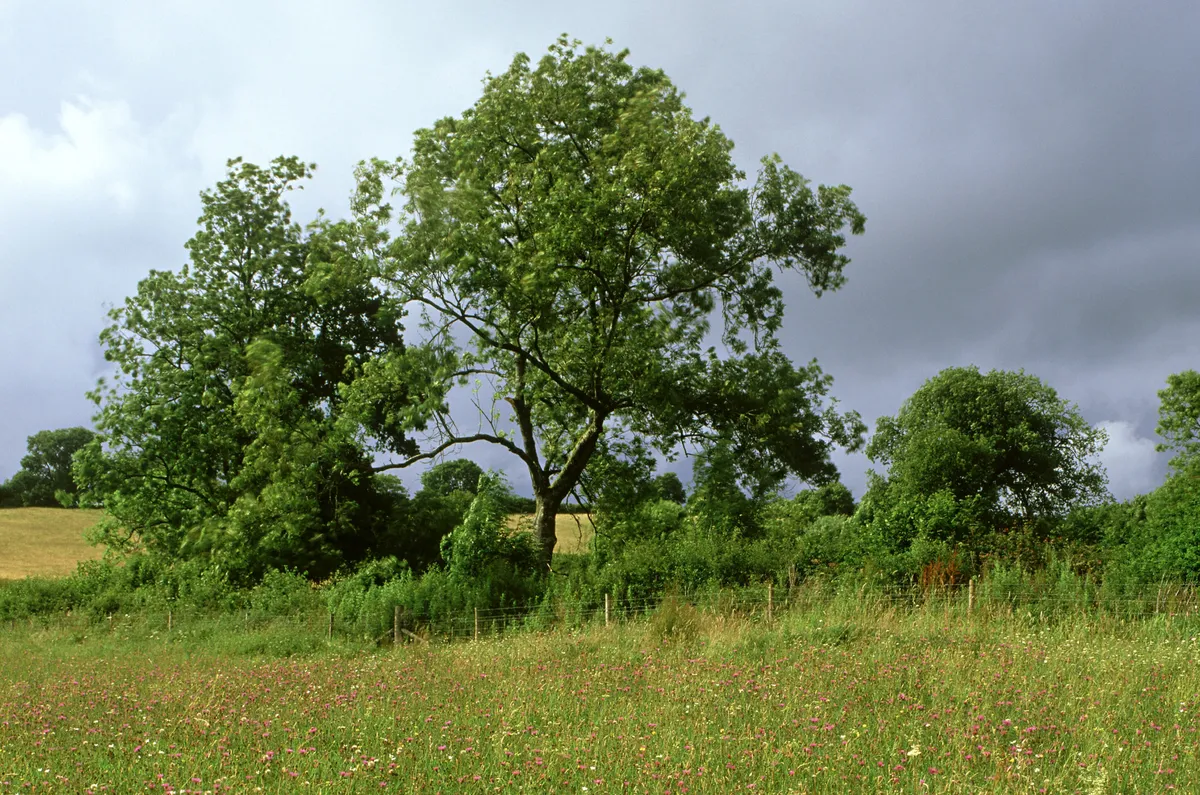
One of the most glorious and diverse examples of a British meadow can be found in a secluded fold in the west Dorset countryside. Managed by the Dorset Wildlife Trust (DWT), Kingcombe Meadows covers 189 hectares – that’s more than 250 football pitches – and spans the valley of the secretive River Hooke.
As summer gets into full swing, the meadow flowers are visited by billows of butterflies, with meadow browns, ringlets and marbled whites to the fore.
Cast your eyes up above them and you might see yellowhammers and linnets. With his pink forehead and chest, the male linnet is a pleasingly recognisable finch. With a particular fondness for good stout hedging and a need for a plentiful supply of seeds all year round, Kingcombe makes an ideal home.
Swaledale, North Yorkshire
6.8 miles/10.9km | 4 hours | moderate
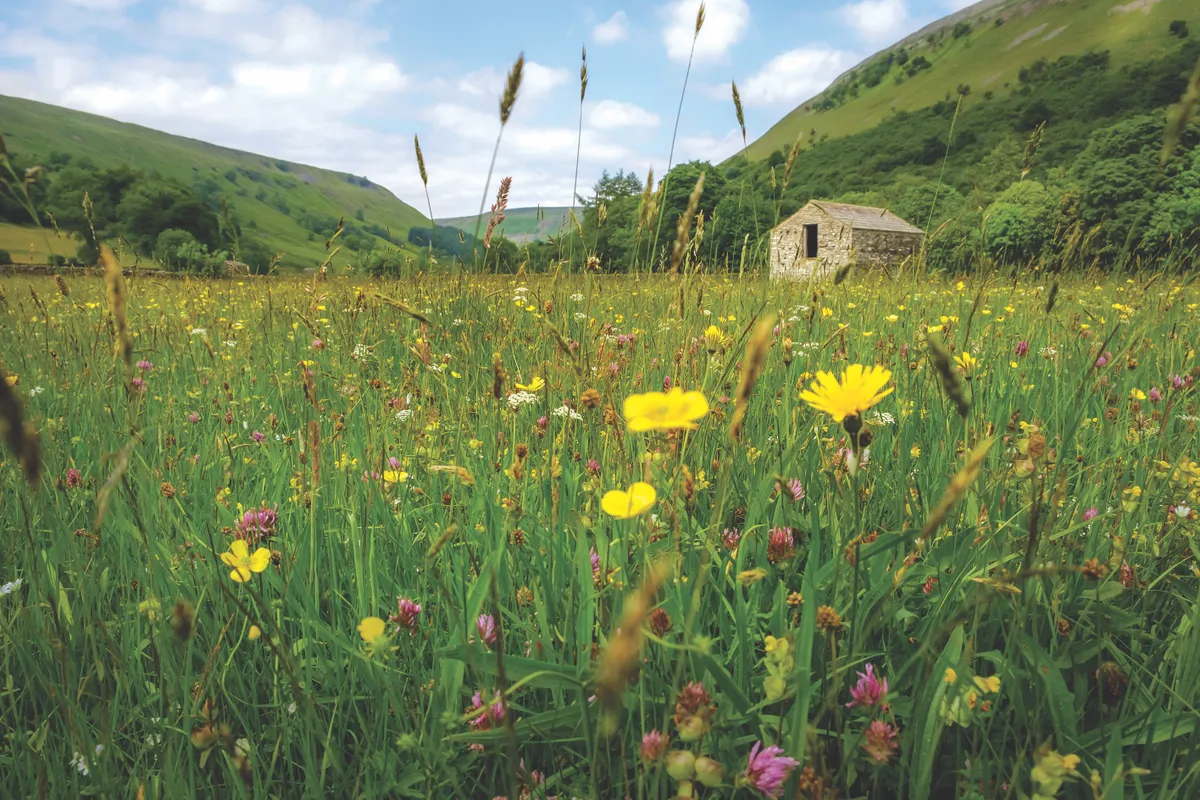
In late spring, Swaledale’s hay meadows burst into life – a colour bonanza best absorbed after a cup of Yorkshire tea and a slice of cake.
Like so much in Swaledale, the name Muker is of Norse origin. The village sits on the banks of the River Swale as it emerges from the deep valley between Kisdon Hill and Black Hill, swinging east on its journey to the North Sea. Solid, stone lead-miners’ cottages gather protectively around the tea shop, the Farmers’ Arms, the Victorian Literary Institute and St Mary’s Church.
Discover more floral delights:
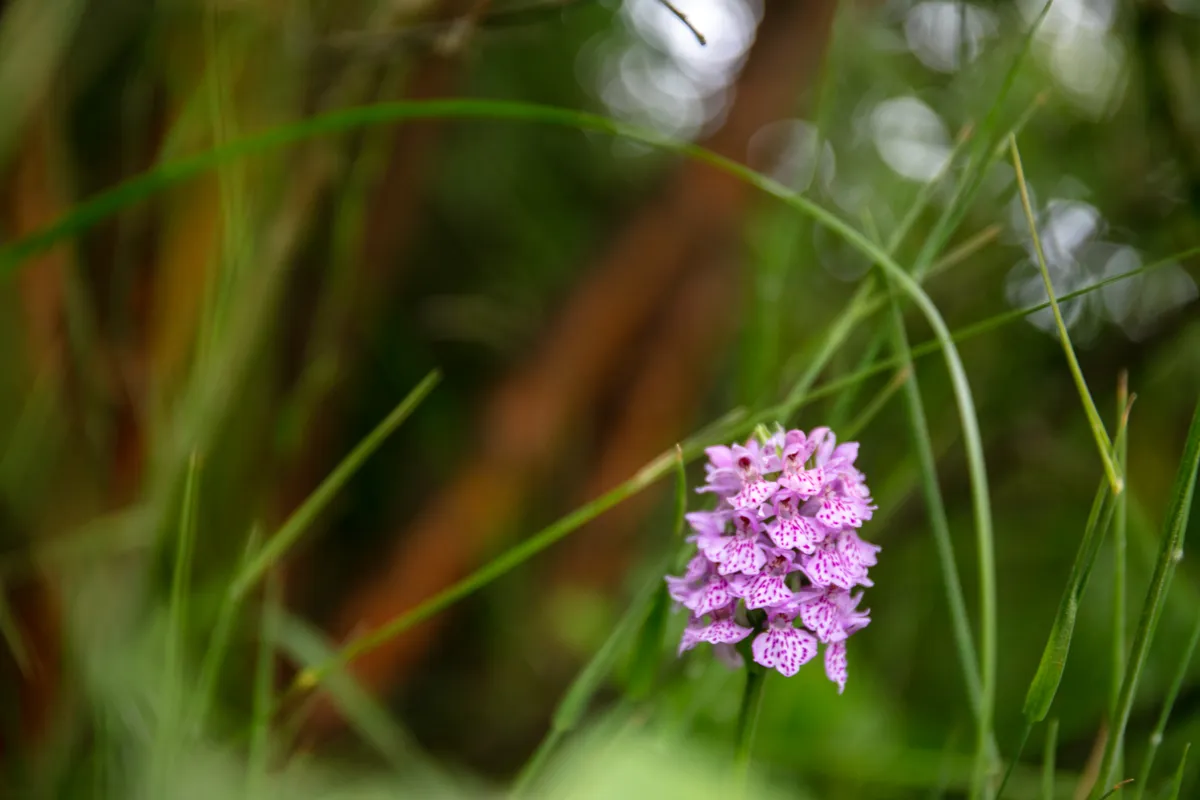
South Uist, Outer Hebrides
6.9 miles/11.1km | 3 hours | moderate

Backing on to wild Atlantic beaches, the west coast of South Uist is a land of undulating flatness, where fields gently rise like the crests of waves, hiding the ocean until you are almost upon it.
As smooth and polished as a snooker table for much of the year, this landscape transforms into a riot of wildflowers as spring unfolds and blurs into summer. This is the land of the machair, the name given to the long strips of sea meadows and coastal grasslands so rich in flora that a square metre contains up to 45 species of wildflowers, from red and white clovers to vetches, eyebrights, harebells and frog orchids. To get the full visual impact, visit as late in spring as you are able to.
Pegsdon and Barton Hills, Bedfordshire
7.1 miles/11.4km | 4 hours | moderate
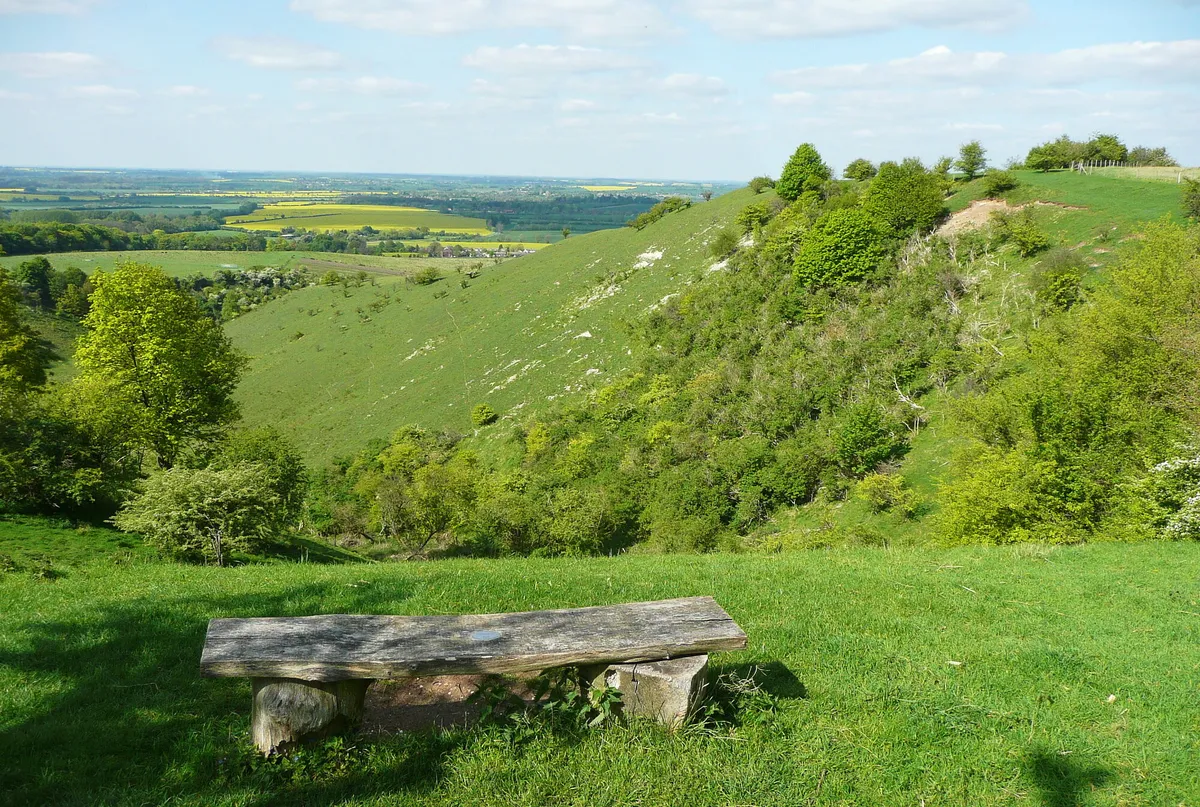
Pegsdon Hills and Hoo Bit Nature Reserve sit above the village of Hexton in the Chiltern Hills AONB. The wildflower meadows that grow on these chalk hillsides are popular with brown argus, green hairstreak, dingy and grizzled butterflies. Wait until after dusk and you may even see glow-worms.
To the west are the steep, well-grazed slopes of Barton Hills National Nature Reserve.
Aston Rowant Nature Reserve, Oxfordshire
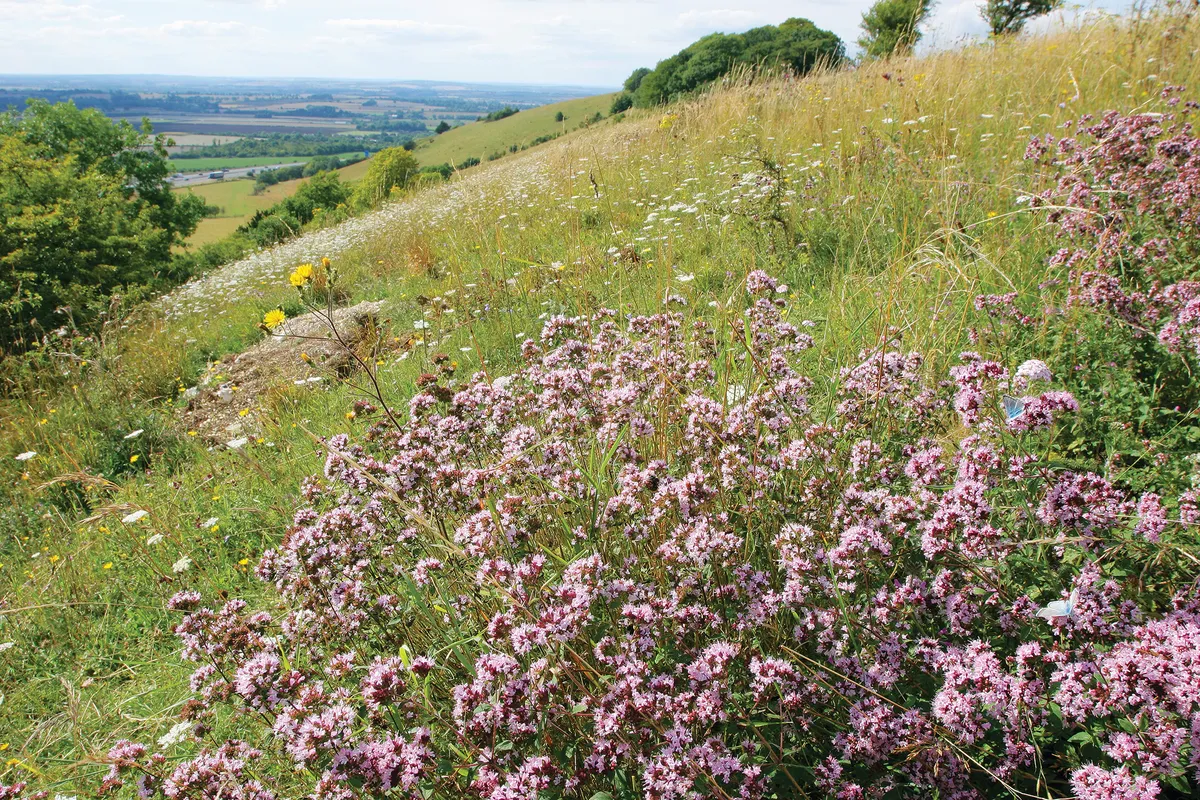
Perched high on the Chilterns escarpment is Aston Rowant National Nature Reserve. Despite the M40 cutting through the reserve, with Cowleaze Wood on one side and Beacon Hill on the other, Aston Rowant hosts flora and fauna of all varieties, as well as majestic views across Oxfordshire.
Perhaps the reserve’s most surprising inhabitant can be found on the hills’ flower-rich grassland and juniper scrub: yellow meadow ants. Their unusual mounds, some of which are over 100 years old, dot the slopes.
Brixham and Berry Head, Devon
4 miles / 6.4km | 2.5 hours | moderate

From the busy fishing harbour at Brixham, with its replica of Sir Francis Drake’s Golden Hind, sample an attractive section of the South West Coast Path before exploring Berry Head Fort and Gun Battery.
The fort dates from the end of the 18th century and was built to defend against the threat of Napoleonic invasion. The grounds of the fort offer a wildflower spectacular, a riot of colour in spring and summer, buzzing with insects and with a soundtrack of birdsong.
Maes Hiraddug & Graig Fawr, Dyserth, Denbighshire
3.4 miles/5.8km | | 2–3 hours | moderate
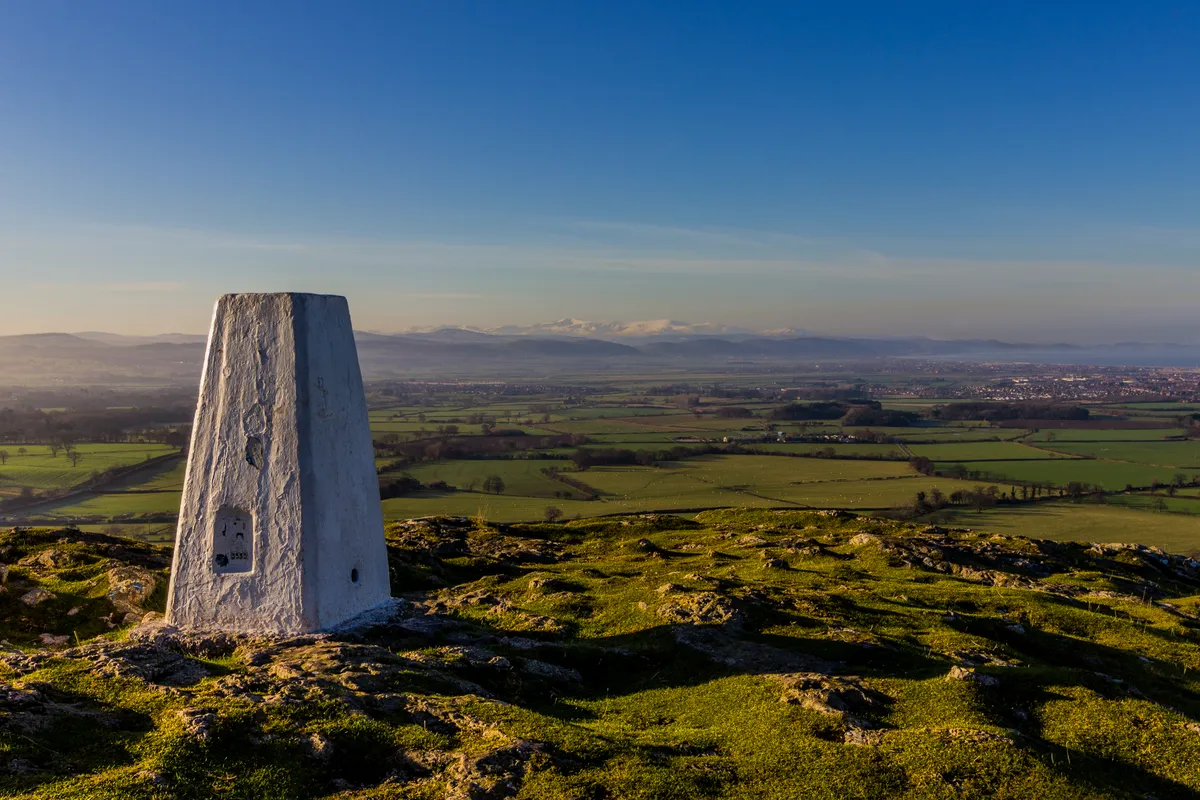
Maes Hiraddug is a delightful spot to visit in spring when the traditional hay meadow bursts with colour. Owned by the North Wales Wildlife Trust, the grassland has never been ploughed and over 140 different plants have been recorded here.
You also visit the National Trust’s Graig Fawr, a limestone hill overlooking the Vale of Clwyd. The walk starts next to the 70ft-high Dyserth Waterfall, which is well worth a visit.
Lyveden New Bield, Northamptonshire
1.5 miles/2.4km | 1 hour | easy
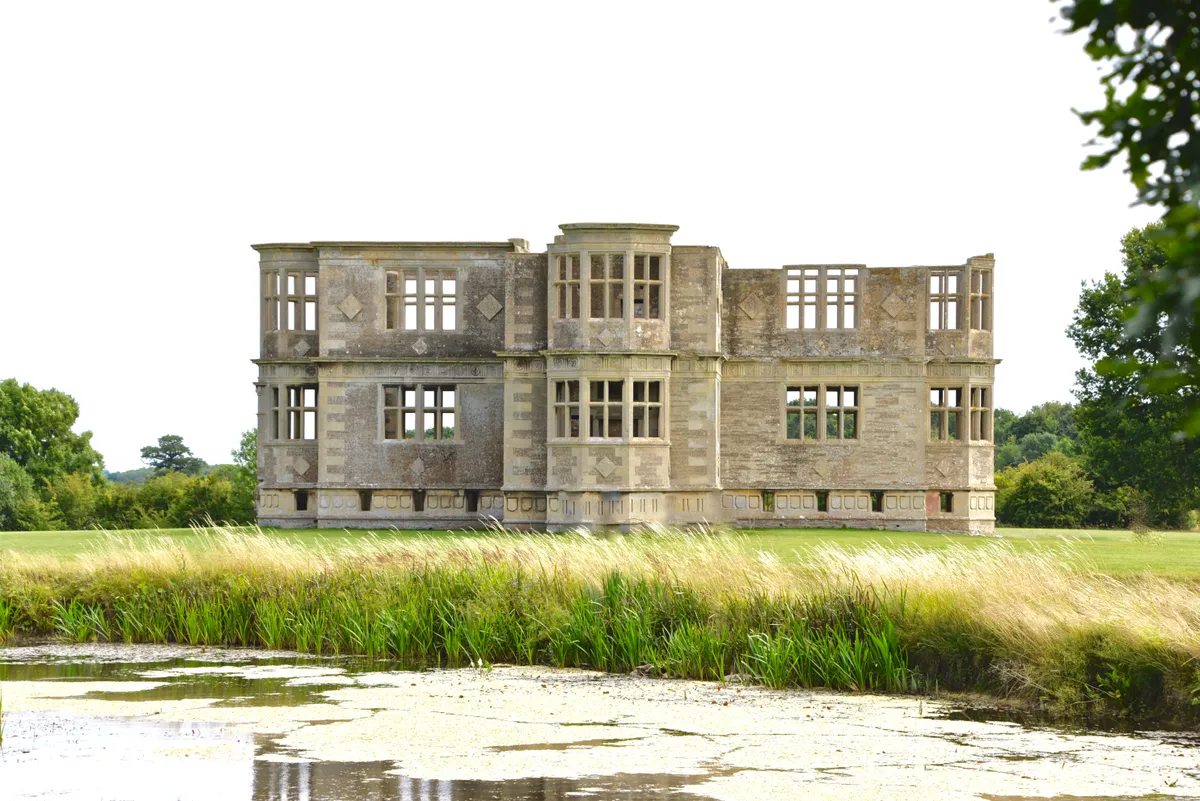
Set on a hillslope with far-reaching views over rural Northamptonshire, Lyveden New Bield is an intriguing, incomplete Elizabethan lodge and pleasure garden.
The property was developed in the late 1500s by Sir Thomas Tresham, but its construction ceased following his premature death in 1605.
The extensive Grade I-listed garden boasts viewing terraces and spiral mounts, a water-filled moat, an orchard, a labyrinth, plus several butterfly-rich wildflower meadows. It’s a place idyllic in the spring and summer months, as the meadows reach their colourful humming best. This is a contemplative walk through one of England’s oldest garden landscapes.
Dentdale, Cumbria
2.5 miles/4km | 1.5 hours | easy
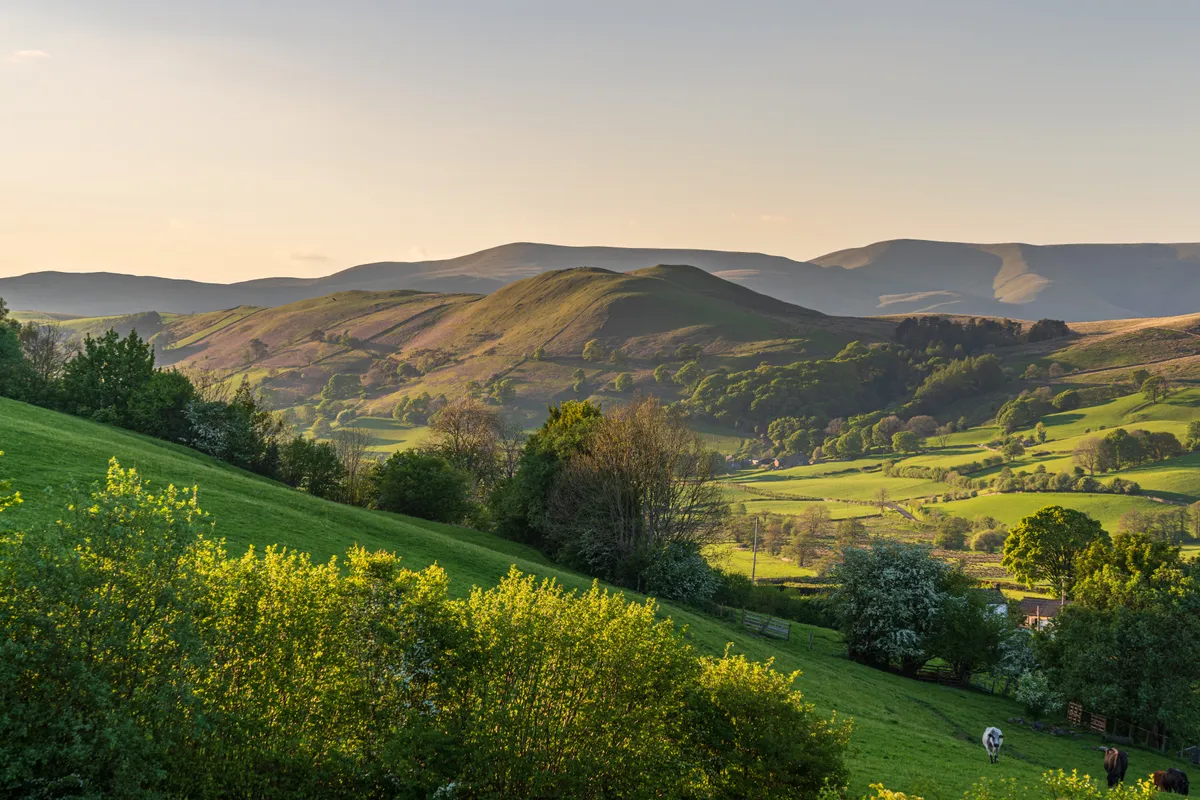
The Yorkshire Dales contains most of Britain’s surviving upland hay meadows, traditionally farmed to allow wildlife to thrive. Dentdale is one of these valleys, divided into a patchwork of idyllic stone-walled fields colourfully blanketed in wildflowers in spring and summer.
Starting from the narrow, cobbled streets of Dent, take time on this walk to look down on species such as meadow buttercup, eyebright and red clover, but also to gaze up at the lofty hills, rising to the highest points in both Yorkshire and Lancashire.
Bosta Beach, Isle of Lewis
6.9 miles/11.1km | 4.5 hours | moderate

Great Bernera, or simply Bernera, is a beautiful, low-lying island off the western side of the Isle of Lewis, one of the most lovely Scottish islands.
Covering just eight square miles, it contains wildflower-filled machair – a Gaelic word that means low-lying grassy habitat – and one of Europe’s rarest. Found only on exposed western coasts of Scotland and Ireland, these sandy but fertile, grassy plains are extremely colourful in spring, and even more so in summer when the flower cover is spectacular, with white daisies and clover, yellow buttercups and vibrant red knapweed and orchids.
This seven-mile circular walk leads to Bosta Beach where there is a reconstructed Iron Age house. Once the walking is done, enjoy a cuppa in the community café.
Cressbrook Dale, Derbyshire
5 miles/8km | moderate | 3 hours
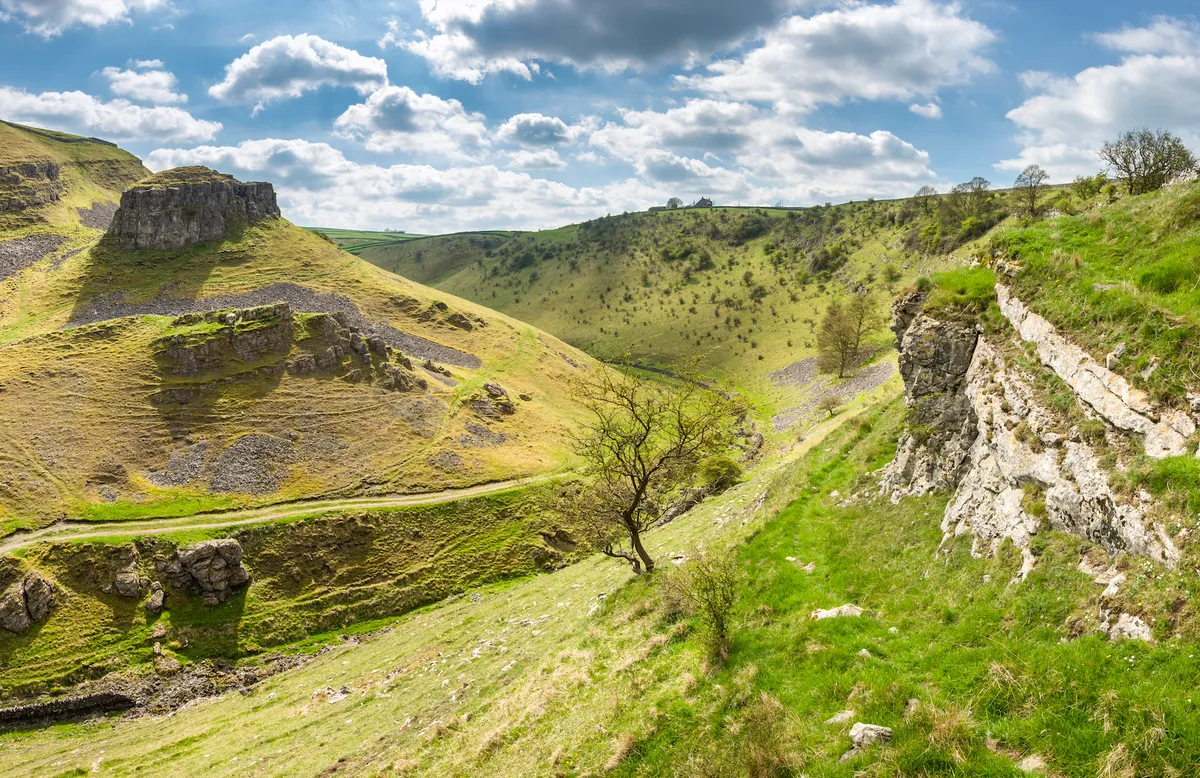
Above Cressbrook Dale, and on Wardlow Hay Cop, diverse grasslands are stitched with wildflowers.
Cressbrook, one of five dales making up the Derbyshire Dales National Nature Reserve, is a treasure trove of rare plants along with the more common rockrose splashing sunshine across the dale-side.
From here climb the meadow of Wardlow Hay Cop before continuing on to Monsal Head with iconic views over the Wye. Complete the flower-filled five-mile ramble via the Monsal Trail.
Morgan’s Hill, Wiltshire
6.5 miles/10.5km | 4 hours | moderate
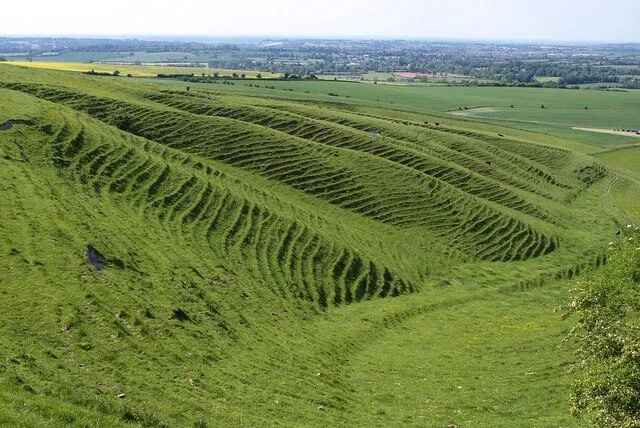
Morgan’s Hill nature reserve is a Site of Special Scientific Interest that bursts into life in the spring.
The slopes of the Wansdyke, old quarry and surrounding grassland are an orchid-hunter’s paradise. Up to 11 species can be found here including early purple, marsh helleborine and common fragrant-orchid.
Just as thrilling are the abundance of butterflies such as the adonis and chalkhill blue, and moths like the mother shipton.
Littondale, Yorkshire
21.8 miles/35.1km | 2.5–3 hours | moderate/challenging
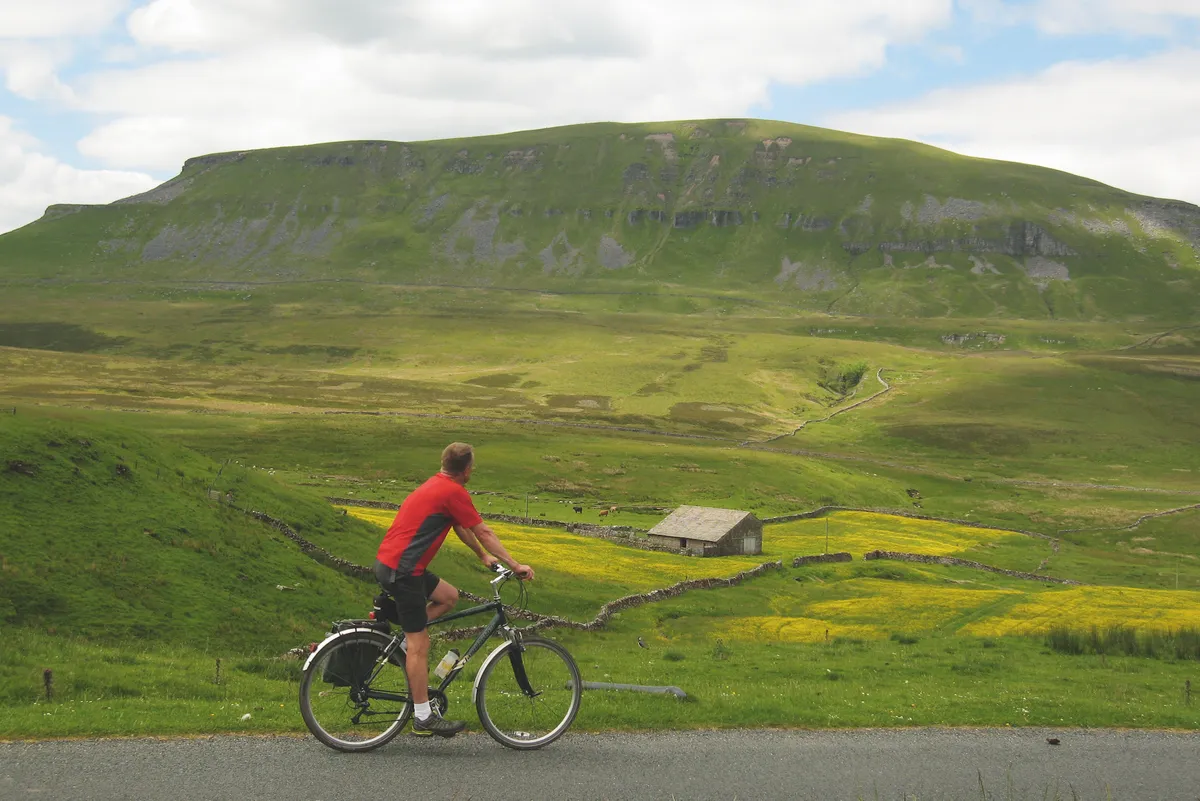
Littondale and Silverdale are the real Yorkshire Dales, far away from the tourist honeypots, and you can’t get much deeper into them than on this ride.
Restored and traditionally managed meadows support a diversity of invertebrates, mammals and birds as well as up to 120 different species of plants and wildflowers, including eyebright, globe flower, melancholy thistle, hay rattle and wood cranesbill.
Castle Caldwell Forest, County Fermanagh
2.5 miles/4km | 1.5 hours | easy
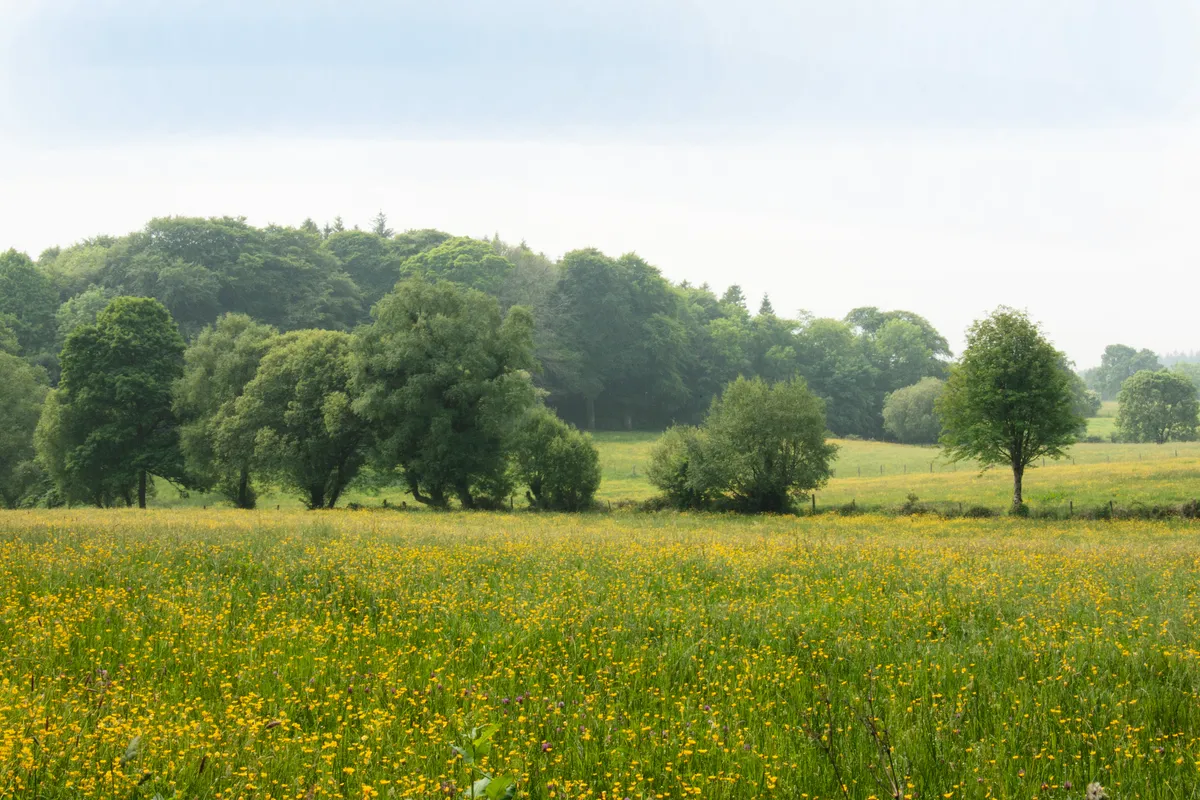
At Castle Caldwell Forest in Northern Ireland’s far west, spring shows itself in a joyous riot of colour. At first, just one or two buttercups appear in the forest glades, poking their yellow heads above a sea of green. Then four or five; a dozen; a score. A few days on and the meadows are awash with brilliant flowers. Other highlights include red clovers, woodland bluebells and courting waterbirds out on the lough.
You could do far worse than find an oak on the forest edge, lay your back against its trunk and watch insects whir as the sun and wind throw shapes across the leas.
Pentwyn Farm, Penallt, Monmouthshire
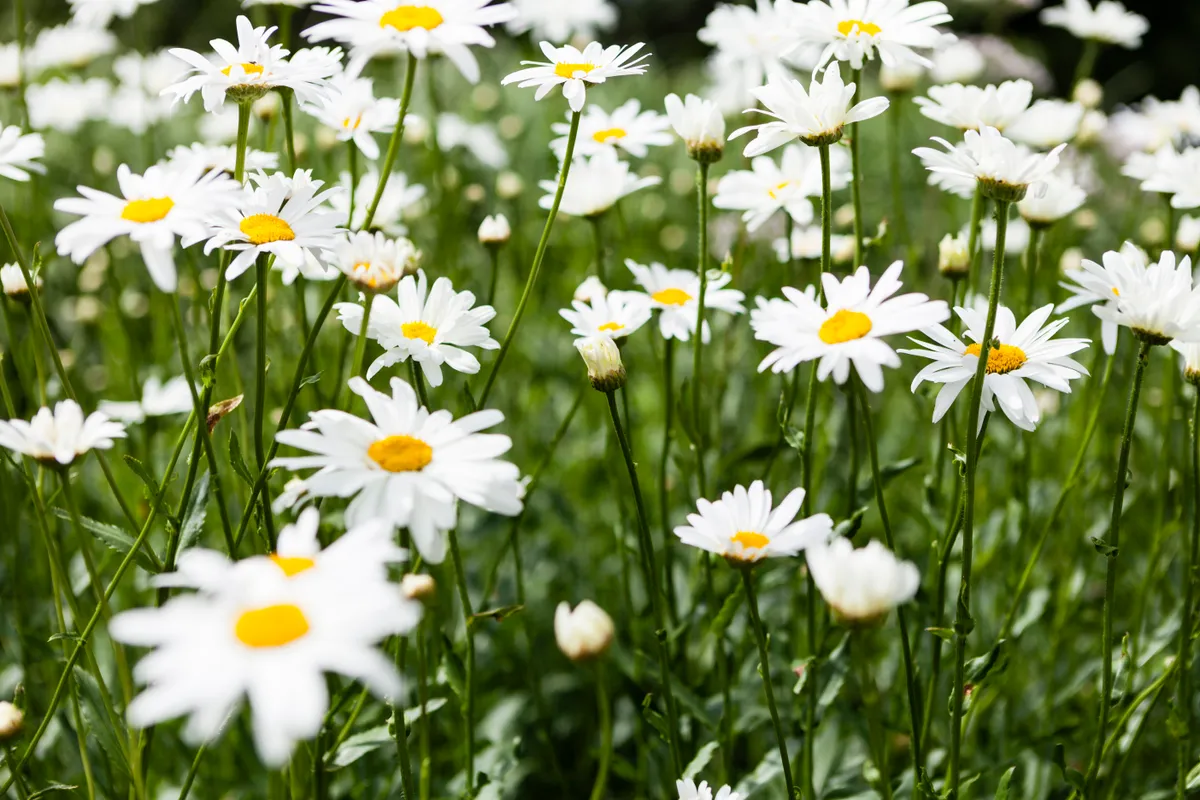
Vestiges of a distant era thrive at the rim of the Trellech Plateau, within the Wye Valley AONB just south of Monmouth. Here, in a deeply bucolic landscape peppered by hamlets and villages, lies Pentwyn Farm.
Owned by Gwent Wildlife Trust, the 12-hectare traditional sheep and cattle farm is a SSSI, recognising the significance of its relict, species-rich fieldscape.
A jigsaw of irregular little hay meadows – a riot of colour throughout spring and summer – spills below secluded Penallt’s cosy Bush Inn and handkerchief-sized village green. Beautiful, blowsy byes threaded by mellow drystone walls slumber above the wooded depths of the Wye’s cavernous gorge. On the farm’s waymarked trail, the first thing to take the eye is the view across to the woodland domes of the Forest of Dean. At your feet, swathes of oxeye daisy, hawkbit, knapweed and yellow-rattle bloom profusely, while venerable hedge-banks glisten with stitchwort and glow with campions.
Polden Hills, Somerset
5.7 miles/9.2km | 4 hours | moderate
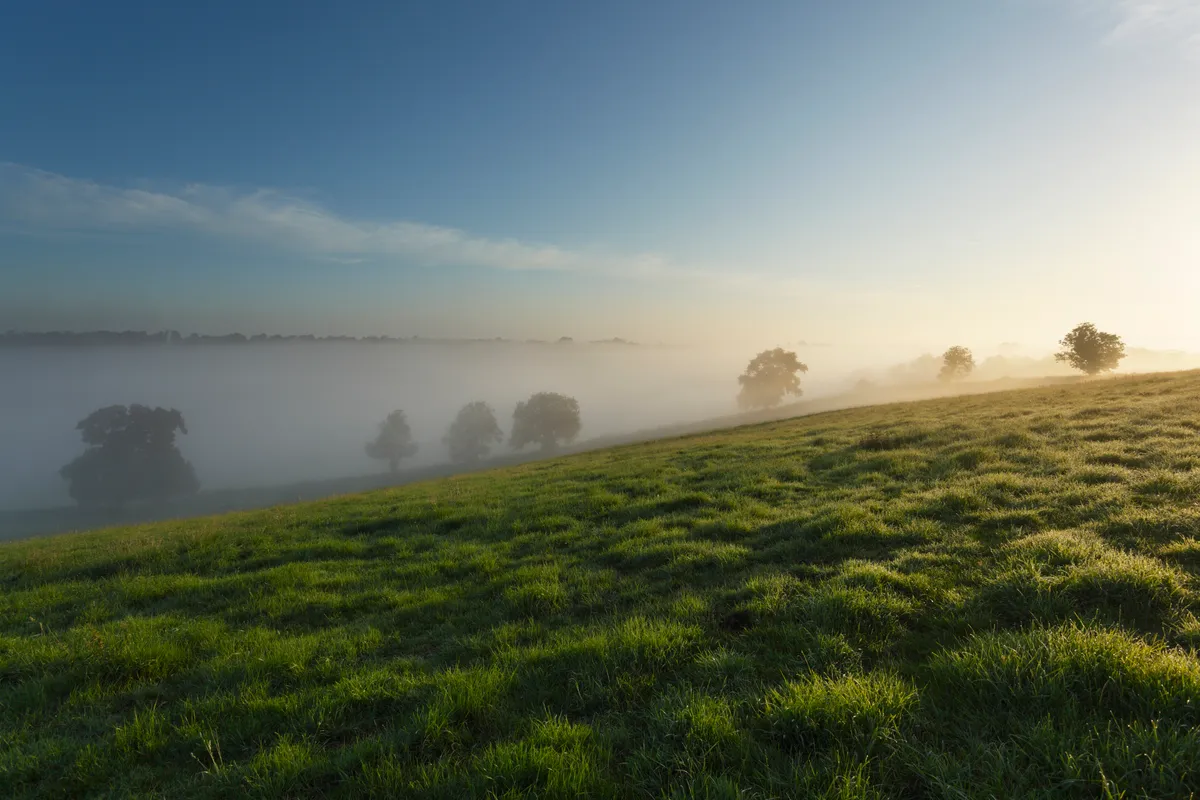
The Polden Hills may be more modest in both height and length, but what they lack in size they more than make up for with a richness of natural beauty. A dedicated footpath runs along the eastern end of the Poldens, following the tops of steep, scarped slopes and the edges of ancient woodland and meadows. In June, a wealth of wildflowers and wildlife waits to be found, including the beautiful large blue butterfly.
Cricklade North Meadow, Wiltshire
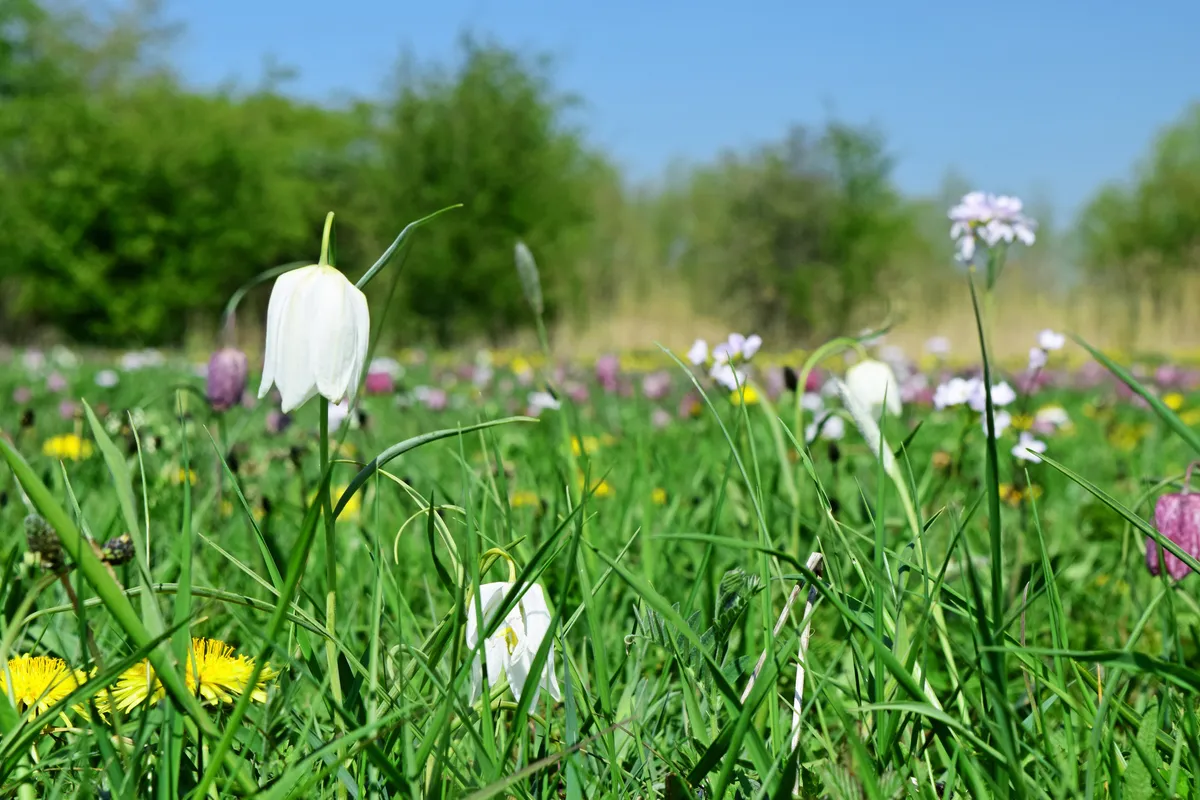
Cricklade North Meadow National Nature Reserve in Wiltshire boasts Britain’s largest population of snake's head fritillary flowers, whose white and purple bells polka-dot the grass in April and early May. Their success here is all down to careful management by Natural England and the Cricklade Manorial Court: this is ancient lammas land, cut for hay in summer and allowed to flood in winter in a way that has remained unchanged for 800 years.
Hever Castle, Kent

Walk or golf by these Hever Castle's tranquil waters in late spring and summer and the native grasses and wildflowers are still there, now further enhanced by a series of kaleidoscopic micro-meadows inspired by Nigel Dunnett and James Hitchmough’s show-stopping wildflower designs for the 2012 Olympic Games. Created to bring joy to visitors and boost biodiversity at the same time, Hever’s meadows are similarly polychromatic, focusing on pollinator-friendly species that bring long-lasting colour.
Whitehill Down, Carmarthenshire
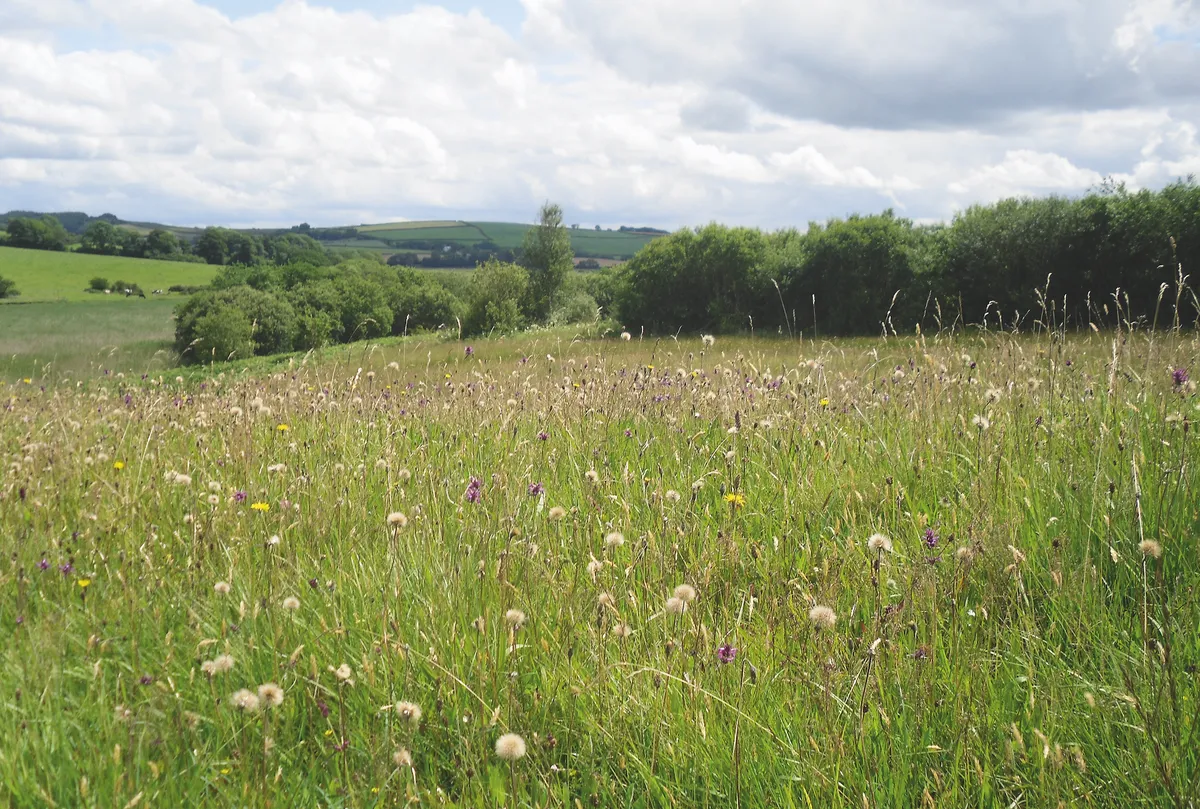
You’ll find Whitehill Down sandwiched between the A477 and the Afon Tâf, halfway between Sanclêr (St Clears) and Lacharn (Laugharne). Drivers might miss it, but Wales Coast Path walkers will not – the path goes right through the down.
Whitehill Down is a SSSI of ancient meadowland and marshy grassland with high floral density that supports a richness of invertebrates, amphibians, mammals and birds – 176 species at the last count. Its administration, too, is historic. Although the Laugharne Corporation (established in 1291) is largely ceremonial these days, it still oversees civic suits and rights to cockle-beds, grazing and ‘strangs’ (strip-fields). Whitehill Down’s strangs, divided by low earth baulks, are no longer cultivated, but they are still allocated to burgesses and managed as meadow in partnership with Natural Resources Wales.
Meon Valley, Hampshire
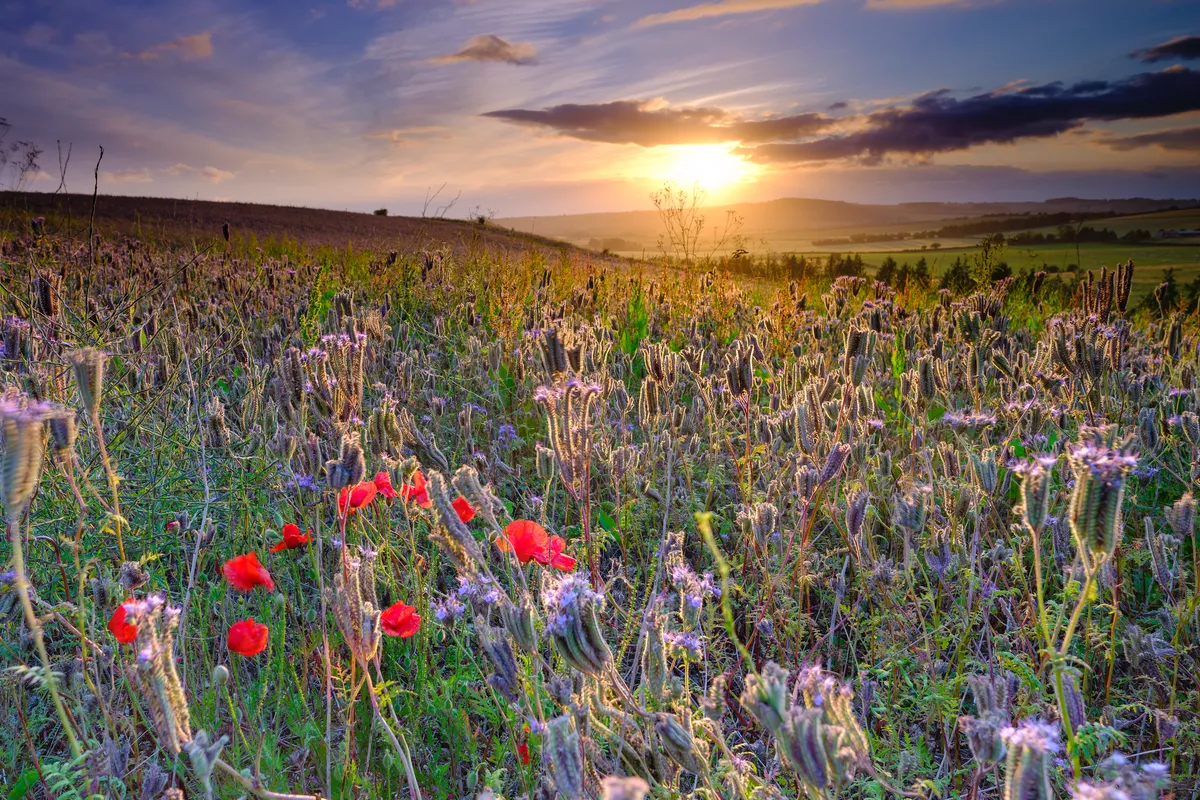
Follow the South Downs Way up the hill, along the trackway and cross the lane to the National Nature Reserve of Old Winchester Hill. This rare habitat in the Meon Valley has been shaped by nibbling livestock and man for hundreds of years, and needs continual management by grazing to maintain its rich wildlife. You may be lucky to see the array of orchids here or plants such as devil’s-bit scabious, cowslips or ox-eye daisies.
Lough Navar Forest Drive, County Fermanagh

Extending across 2,600 hectares of rolling countryside, Lough Navar Forest and its hidden grassy glades can be explored via a network of walking trails, but if you only have a morning or afternoon, this seven-mile forest drive offers a pleasant alternative. There are plenty of pull-ins for those wanting to take their time, as well as some of Northern Ireland’s most extensive views.
Aghameelan Viewpoint, look south-east, where hills of yellow buttercups roll down to Carrick Lough and the Carboniferous limestone ridge of Knockmore Cliff.
